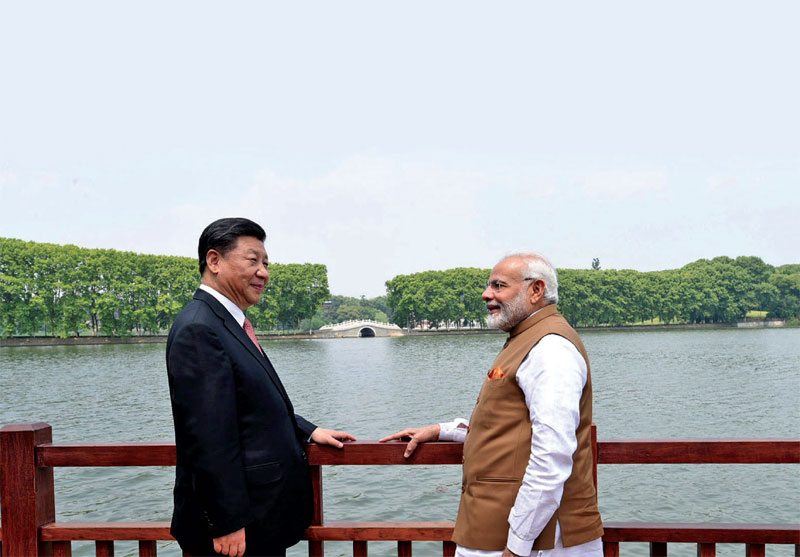India can still win against China. Here’s how.
Pravin Sawhney
Writing in the Indian Express newspaper (31 August 2022), senior Congress leader, P. Chidambaram says that to deter the Dragon, the government should craft China policy by taking opposition parties into confidence by sharing the facts.

The problem is that the government does not have the facts since the military leadership remains ignorant of the quantum of People’s Liberation Army (PLA) threat on the Line of Actual Threat as well as the combined threat of the PLA and Pakistan military in north Kashmir. Without a realistic threat assessment, it is not possible to craft China policy comprising military power and statecraft.
If it sounds odd that with the PLA in occupation of 1,000 square kilometres of Indian territory in east Ladakh, the India military has not done realistic threat assessment, it is, but more than that, it is tragic. The reason is, the Modi government has determined the threat to India for the military, and the military leadership has meekly accepted it. The threat, as given out by the Prime Minister himself in his first address to combined commanders conference in October 2014 is terrorism. Rest all is about managing perception of India being a strong nation capable of standing up to China.
Since I have done six years of search and research in assessing real external threats and what they would mean to India, a few of my findings as written in my recent book The Last War are given below along with what needs to be done to assuage them. Given the unbridgeable gap between the PLA and the India military in terms strategic culture, military industrial complex, civil-military fusion, emerging technologies (especially Artificial Intelligence), and war concepts, the PLA could end up waging the first AI driven war the world would witness.
Meanwhile, the PLA’s present threat is of information war (grey zone operations) in peacetime, and a combination of the PLA’s information, informatized (information domination and its denial to the enemy by systems destruction warfare) and intelligentized wars (combat operations conducted with intelligent weapons using intelligent platforms with artificial intelligence as its core, and with technical support by intelligent networks, cloud, big data, and Internet of Military Things [IoMT]).
The PLA’s conventional war will exhibit ten distinctive characteristics. One, the PLA will exercise total war control by dominating the primary battlespace comprising cyberspace, electromagnetic space, and outer space domains. It will, therefore, exert control over war aims, war concepts, speed, tempo, intensity, and outcome. This involves seizing the initiative, paralysing the enemy, dominating the escalation ladder, and laying grounds for war termination on one’s own terms.
Two, consequent to total war control, the PLA will combat simultaneously at strategic and operational levels of war, bypassing the tactical level of war, which is the strength of the Indian Army and the Indian Air Force (IAF). Moreover, the war will be unleashed suddenly without warning, crisis, and pre-war periods. The PLA’s strategic level, called the war zone, will include the whole-of-nation, while the operational level will be the combat zone across the two war theatres mentioned above. It will be the PLA’s war zone and combat zone operations versus the Indian military’s tactical operations.
Three, the PLA and Indian military will combat at different tempo and speed of war. The PLA’s tempo of war will be determined by the speed of light through cyberspace, and conventional surface-to-surface missiles with the ability to hit targets thousands of kilometres away at speeds of over Mach 20. One Mach, which is the speed of sound, is 1,235 km per hour, and the speed of light, which is in nanoseconds, is 300,000 km per second. In addition to the traditional missiles, bombs, and munitions, the PLA will place a premium on electronic warfare, cyber warfare, and directed energy weapons operating at the speed of light. The Indian military’s pace of war, on the other hand, will be determined by its fastest platforms. The conventional BrahMos cruise missile has a maximum speed of Mach 3.7. The IAF’s frontline Rafale aircraft’s speed is 2,450 kmph, and the Indian Army soldiers’ speed will be less than 5 km per hour in high altitude.
Four, the PLA’s massive sensors network on land, air, and in outer space will provide real-time situational awareness of the combat zone, operational logistics lifeline, and high value targets in the hinterland. There will be no place to hide from the PLA’s accurate multi-domain firepower.
You must be logged in to view this content.

